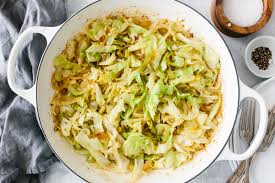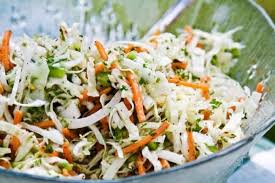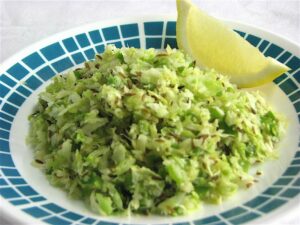We All Need to Eat Cabbage!
go.ncsu.edu/readext?1052645
en Español / em Português
El inglés es el idioma de control de esta página. En la medida en que haya algún conflicto entre la traducción al inglés y la traducción, el inglés prevalece.
Al hacer clic en el enlace de traducción se activa un servicio de traducción gratuito para convertir la página al español. Al igual que con cualquier traducción por Internet, la conversión no es sensible al contexto y puede que no traduzca el texto en su significado original. NC State Extension no garantiza la exactitud del texto traducido. Por favor, tenga en cuenta que algunas aplicaciones y/o servicios pueden no funcionar como se espera cuando se traducen.
Português
Inglês é o idioma de controle desta página. Na medida que haja algum conflito entre o texto original em Inglês e a tradução, o Inglês prevalece.
Ao clicar no link de tradução, um serviço gratuito de tradução será ativado para converter a página para o Português. Como em qualquer tradução pela internet, a conversão não é sensivel ao contexto e pode não ocorrer a tradução para o significado orginal. O serviço de Extensão da Carolina do Norte (NC State Extension) não garante a exatidão do texto traduzido. Por favor, observe que algumas funções ou serviços podem não funcionar como esperado após a tradução.
English
English is the controlling language of this page. To the extent there is any conflict between the English text and the translation, English controls.
Clicking on the translation link activates a free translation service to convert the page to Spanish. As with any Internet translation, the conversion is not context-sensitive and may not translate the text to its original meaning. NC State Extension does not guarantee the accuracy of the translated text. Please note that some applications and/or services may not function as expected when translated.
Collapse ▲Despite its impressive nutrient content, cabbage is often overlooked. While it may look a lot like lettuce, it actually belongs to the Brassica genus of vegetables, which includes broccoli, radishes, and Brussels sprouts.
It comes in a variety of shapes and colors, including red, purple, white, and green, and its leaves can be either crinkled or smooth. This vegetable has been grown around the world for thousands of years and can be found in a variety of dishes, including sauerkraut, kimchi, and coleslaw. Additionally, cabbage is loaded with vitamins and minerals. This article uncovers 9 surprising health benefits of cabbage, all backed by science.
Cabbage is packed with nutrients. Even though cabbage is very low in calories, it has an impressive nutrient profile. In fact, just 1 cup, or 89 grams (g), of raw green cabbage which cooks down to ½ cup contains:
Calories: 22
Protein: 1 g
Fiber: 2 g
Vitamin K: 56% of the Daily Value (DV)
Vitamin C: 36% of the DV
Folate: 10% of the DV
Manganese: 6% of the DV
Vitamin B6: 6% of the DV
Calcium: 3% of the DV
Potassium: 3% of the DV
Magnesium: 3% of the DV
Cabbage also contains small amounts of other micronutrients, including vitamin A, iron, and riboflavin.
As you can see in the list above, it is rich in vitamin B6 and folate, both of which are essential for many important processes in the body, including energy metabolism and the normal functioning of the nervous system. In addition, cabbage is high in fiber and contains powerful antioxidants, including polyphenols and sulfur compounds. Antioxidants protect the body from damage caused by free radicals. Free radicals are molecules that have an odd number of electrons, making them unstable. When their levels become too high, they can damage your cells. Cabbage is especially high in vitamin C, a potent antioxidant that may protect against heart disease, certain cancers, and vision loss.
Cabbage may help keep inflammation in check. Inflammation isn’t always a bad thing. In fact, your body relies on the inflammatory response to protect against infection or speed up healing. This kind of acute inflammation is a normal response to an injury or infection. On the other hand, chronic inflammation that occurs over a long period of time is associated with many diseases, including heart disease, rheumatoid arthritis, and inflammatory bowel disease.
Cruciferous vegetables like cabbage contain many different antioxidants that have been shown to reduce chronic inflammation. In fact, one 2014 study of young adults aged 20-40 showed that eating more cruciferous vegetables could reduce certain blood markers of inflammation. Another older study in over 1,000 females showed that those who ate the highest amounts of cruciferous vegetables had considerably lower levels of inflammation, compared to those who ate the lowest amounts. Sulforaphane, kaempferol, and other antioxidants found in this remarkable group of plants are likely responsible for their anti-inflammatory effect.
Cabbage is packed with vitamin C. Vitamin C, also known as ascorbic acid, is a water-soluble vitamin that serves many important roles in the body. For instance, it’s needed to make collagen, the most abundant protein in the body. Collagen gives structure and flexibility to the skin and is critical for the proper functioning of the bones, muscles, and blood vessels. Additionally, vitamin C helps the body absorb non-heme iron, the type of iron found in plant foods. What’s more, it’s a powerful antioxidant. In fact, it has been extensively researched for its potential cancer-fighting qualities. Vitamin C works to protect the body from damage caused by free radicals, which has been associated with many chronic conditions, including cancer.
Evidence suggests that a diet high in vitamin C-rich foods is associated with a lower risk of certain cancers. While many observational studies have found a link between higher vitamin C intake and a reduced risk of certain cancers, results from controlled studies remain inconsistent. Even though more research is needed to determine this vitamin’s impact on cancer prevention, it’s certain that vitamin C plays a key role in many important functions in the body.
While both green and red cabbage are excellent sources of this potent antioxidant, red cabbage contains significantly more. One cup (89 g) of chopped red cabbage packs in 56% of the recommended intake for vitamin C, which is the same amount found in a small orange.
Cabbage helps improve digestion. If you want to improve your digestive health, fiber-rich cabbage is a great option. This crunchy vegetable is full of gut-friendly insoluble fiber, a type of carbohydrate that can’t be broken down in the intestines. Insoluble fiber helps keep the digestive system healthy by adding bulk to stool and promoting regular bowel movements. What’s more, it’s rich in soluble fiber, which has been shown to increase the number of beneficial bacteria in the gut. This is because fiber is the main fuel source for friendly species like Bifidobacteria and Lactobacilli. These bacteria perform important functions like protecting the immune system and producing critical nutrients like vitamins K2 and B12. Eating more cabbage is an excellent way to keep your digestive system healthy and happy.
Cabbage may help keep your heart healthy. Red cabbage contains powerful compounds called anthocyanins. They give this delicious vegetable its vibrant purple color. Anthocyanins are plant pigments that belong to the flavonoid family.
Many studies have found a link between eating foods rich in this pigment and a reduced risk of heart disease.
In a 2013 study including 93,600 females, researchers found that those with a higher intake of anthocyanin-rich foods had a lower risk of a heart attack. Another analysis of 15 observational studies had similar findings, reporting that increased intake of flavonoids was associated with a significantly lower risk of dying from heart disease. Increasing your intake of dietary anthocyanins has also been shown to reduce blood pressure and LDL (bad) cholesterol levels. Inflammation is known to play a major role in the development of heart disease, and anthocyanins’ protective effect against it is likely due to their anti-inflammatory qualities. Cabbage contains more than 36 different kinds of potent anthocyanins, making it an excellent choice for heart health.
Cabbage may lower blood pressure. High blood pressure affects more than one billion people worldwide and is a major risk factor for heart disease and stroke. Doctors often advise patients with high blood pressure to reduce their salt intake. However, recent evidence suggests that increasing your dietary potassium is just as important for lowering blood pressure. Potassium is an important mineral and electrolyte that the body needs to function properly. One of its main jobs is to help regulate blood pressure by counteracting the effects of sodium in the body.
Potassium helps excrete excess sodium through urine. It also relaxes blood vessel walls, which lowers blood pressure. While both sodium and potassium are important for health, modern diets tend to be too high in sodium and too low in potassium. Red cabbage is a good source of potassium, delivering 9% of the DV in a 2-cup (178-g) serving. Eating more potassium-rich cabbage is a delicious way to lower high blood pressure and may help keep it within a healthy range.
Cabbage could help lower cholesterol levels. Cholesterol is a waxy, fat-like substance found in every cell in your body. Some people think all cholesterol is bad, but it’s essential for the body’s proper functioning. Critical processes depend on cholesterol, such as proper digestion and the synthesis of hormones and vitamin D. However, people who have high cholesterol also tend to have an increased risk of heart disease, especially when they have elevated levels of LDL (bad) cholesterol. Cabbage contains two substances that have been shown to decrease levels of LDL (bad) cholesterol soluble fiber and phytosterols. Soluble fiber has been shown to help lower LDL cholesterol levels by binding with cholesterol in the gut and keeping it from being absorbed into the blood. Phytosterols are plant compounds that are structurally similar to cholesterol, and they reduce LDL cholesterol by blocking the absorption of cholesterol in the digestive tract. A 2020 American Heart Association study showed that 2-3 grams of phytosterols a day reduced LDL cholesterol by 9-12%.
Cabbage is an excellent source of vitamin K. Vitamin K is a collection of fat-soluble vitamins that plays many important roles in the body. These vitamins are divided into two main groups:
Vitamin K1 (phylloquinone): This is found primarily in plant sources.
Vitamin K2 (menaquinone): This form is found in animal sources and some fermented foods. It is also produced by bacteria in the large intestine.
Cabbage is a terrific source of vitamin K1, delivering 56% of the DV in a single cup (89 g). Vitamin K1 is a key nutrient that plays many important roles in the body. One of its main functions is to act as a cofactor for enzymes that are responsible for clotting the blood. Without vitamin K, the blood would lose its ability to clot properly, increasing the risk of excessive bleeding.
It’s very easy to add Cabbage to your diet. In addition to being super healthy, cabbage is delicious. It can be eaten raw or cooked and added to a wide variety of dishes like salads, soups, stews, and slaws. This versatile veggie can even be fermented and made into sauerkraut. In addition to being adaptable to many recipes, cabbage is extremely affordable. No matter how you prepare cabbage, adding this cruciferous vegetable to your plate is a tasty way to benefit your health.
Speaking of Healthy Diet, I encourage you to sign up for the “Med instead of Meds” Culinary Nutrition Classes being offered at the N.C. Cooperative Extension-Beaufort County Center. The Center is located in the Ag. Building at 155 Airport Road in Washington. These 5 fun hands-on cooking classes will teach healthy principles of the Mediterranean Lifestyle. The classes will be offered on Thursday evenings May 15 – June 12 from 5:30-7:30 p.m. for adults. There is a registration fee of $50 per person for the entire series to help offset the food cost. Participants will follow food safety guidelines as we prepare recipes from the “Med instead of Meds” program and we will enjoy sampling from a delicious and colorful buffet each class. The space is limited so be sure and call the BC Extension Center at 252-946-0111 for more information.
In summary, cabbage is an exceptionally healthy food. It has an outstanding nutrient profile and is especially high in vitamins C and K. In addition, eating cabbage may even help lower the risk of certain diseases, improve digestion, and ease inflammation. Plus, cabbage makes a tasty and inexpensive addition to a number of recipes. With so many potential health benefits, it is easy to see why cabbage deserves some time in the spotlight and some room on your plate. Hope these cabbage recipes are a hit with your family.
Sauteed Cabbage
Serves 6
Sauteed cabbage is a simple side dish that’s full of flavor. Sliced cabbage is tossed in garlic, butter and onions, then caramelized into a golden brown. It is so yummy!

Sauteed Cabbage
1 small head green cabbage, thinly sliced
1 onion, sliced
2 garlic cloves, minced
2 tablespoon ghee, or a blend of butter and olive oil
salt and pepper, to taste
- Cut the cabbage in half, remove the core and chop into thin slices. Then chop the onions into slices.
- Melt the ghee in a large skillet over medium high heat.
- Sauté the onions for a minute or until just starting to soften.
- Then add in the minced garlic and stir again.
- Add the cabbage and sauté for about 12-15 minutes. During this time, stir the cabbage occasionally until the cabbage becomes soft and caramelized.
- Before serving, season with salt and pepper and toss to combine.
Tip: Because the cabbage may take up most of your pan, it’s easiest to stir the cabbage with tongs. You could also sauté the cabbage in batches if your pan isn’t big enough. But cabbage, similar to spinach, will wilt down once it cooks.
Nutritional Information per serving: Calories: 80, Carbohydrates: 9g, Protein: 2g, Fat: 5g, Saturated Fat: 1g, Sodium: 22mg, Potassium: 229mg, Fiber: 3g, Sugar: 5g, Vitamin A: 117IU, Vitamin C: 45mg, Calcium: 54mg and Iron: 1mg.
The Best Coleslaw Serves 12
This easy coleslaw recipe is perfect whether it’s served as a side dish or layered in pulled pork sliders.

The Best Coleslaw
¾ green cabbage finely shredded
¼ red cabbage finely shredded
3 medium carrots grated
1 cup mayonnaise
2 tablespoons apple cider vinegar
1 tablespoon honey (or more for desired sweetness)
1 teaspoon celery seeds
¼ teaspoon salt
¼ teaspoon black pepper
- Prep the coleslaw: Add the shredded green cabbage, red cabbage, and carrots to a large bowl.
- Make the dressing: Combine the mayonnaise, honey, apple cider vinegar, salt, pepper, and celery seeds in a small bowl and whisk together. (If you want the dressing to be sweeter, add more honey.)
- Stir it all together: Pour about half of the dressing onto the cabbage and carrots and toss. Slowly add more dressing until you’ve reached your desired slaw-to-dressing ratio.
- Other ingredients to add to this coleslaw: Chopped spring onions, sliced apples, or even dried raisins will be a delicious touch to this recipe!
- To store: Once the veggies are mixed with the dressing, it will last about 4 to 5 days in the fridge in a sealed container.
Note: This recipe makes approximately 12 cups of coleslaw If your cabbage is larger or smaller, this may vary.
Nutritional Information per serving: Calories: 159, Carbohydrates: 8g, Protein: 1g, Fat: 14g, Saturated Fat: 2g, Polyunsaturated Fat: 8, Monounsaturated Fat: 3g, Cholesterol: 8mg, Sodium: 193mg, Potassium: 197mg, Fiber: 2g, Sugar: 5g, Vitamin A: 2811IU, Vitamin C: 32mg, Calcium: 41mg and Iron: 1mg.
Cabbage Stir Fry
Serves 2
This recipe is extremely easy to prepare and makes a great side dish. If you like spice, add a Thai green chili or jalapeño.

Cabbage Stir-Fry
1 tablespoon olive oil
2 teaspoons cumin seeds
2 teaspoons freshly grated ginger
2 Thai green chilies or jalapeño peppers, finely chopped (optional)
2 cups shredded green cabbage
¼ teaspoon salt
- Heat 1 tablespoon of olive oil in a skillet over medium heat.
- Add the cumin and grated ginger and sauté for 2-3 minutes.
- Add in the Thai green chilies or jalapeño peppers (optional) and sauté for another minute.
- Add the cabbage and mix. Lower heat to medium-low and cook for about 3-5 minutes, stirring occasionally.
- Add the salt once cabbage becomes tender and translucent. Stir and serve.
Nutritional Information per ¾ cup serving: Calories: 87, Carbohydrates: 5 grams, Fiber: 2 grams, Protein: 1 gram, Fat: 7 grams and Sodium: 307 mg.
Sources for this article NC Extension Food and Nutrition educational program. For more information about the Foods and Nutrition please contact Louise L. Hinsley, Extension Agent, Family Consumer Science at the Beaufort County Center of N.C. Cooperative Extension, 155 Airport Road, Washington, 252-946-0111.



